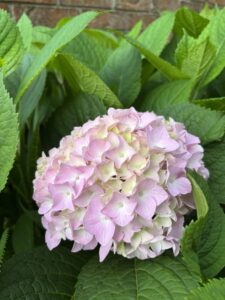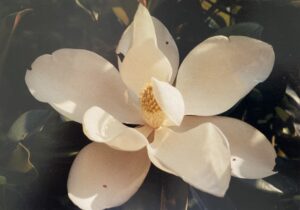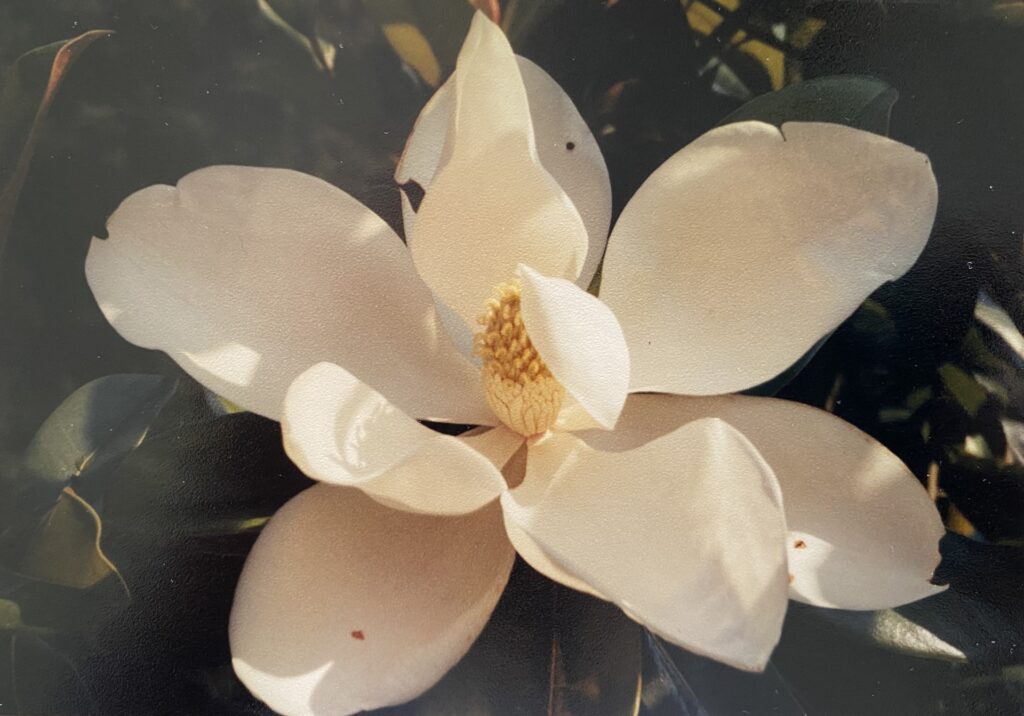Look at the lilies of the field and how they grow. They don’t work or make their clothing, yet Solomon in all his glory was not dressed as beautifully as they are. Matthew 6:28
While scrolling through my flower photos for this season, I happened upon a beautiful shot of a hydrangea bloom, one of only five on my two otherwise very healthy bushes. In fact, they grow so fast that I need to cut them back several times during the growing season to keep them from covering other, smaller plants. Their giant leaves shade my hostas and coral bells from the hot, summer sun. Why then are they not covered in clusters of pink, blue, and cream? Simple fact, hydrangeas are not supposed to be pruned back until about March in our area because their new blooms form on old wood. The trick is to see which stems are dead and which ones are producing buds, then take out the dead wood and leave the rest to create those gorgeous blossom clusters.
My problem is that even when I pruned properly, I seldom got many blooms. So I asked myself why I should live all winter with those ugly brown stems that stick me every time I get near them. My first choice would be to remove them altogether, but their root systems are very well developed and, in order to dig them out, I’d have to be willing to sacrifice other nearby plants that might not survive the trauma. Hence, I cut my hydrangeas back to about eight inches after they die back in the fall and settle for great foliage and protection for other plants during the summer.
 But, guess what, this year they bloomed anyway, and I was thrilled. Apparently, there must have been an old branch tucked somewhere underneath that sprouted and developed into things of beauty.
But, guess what, this year they bloomed anyway, and I was thrilled. Apparently, there must have been an old branch tucked somewhere underneath that sprouted and developed into things of beauty.
This brings to mind another instance of surprise blooms. I’ve always loved Southern Magnolia trees and, on our wedding night, when we stepped into our motel room, I found a giant stemmed vase boasting an equally giant magnolia blossom. I felt very blessed that my new husband arranged such a sweet gift. I carried that vase balanced between my knees for many miles as we drove deep into Florida on our honeymoon. I can’t recall how many days the bloom lasted, but I wasn’t going to miss a moment of its beauty. And I still have the vase.
Years later, we finally bought a home of our own, and I planted a young southern magnolia tree. When it was three years old, Ken came rushing into the house, announcing that there were blooms on the magnolia tree. I thought it was just another of his interesting pranks, because, you see, magnolias are not expected to bloom until around their fifteenth year. There was no way there could be blooms on that tree. But he kept pestering me until I gave in and went to check on a tree that I was certain had no blooms, just so Ken would give up and let me get back to what I was doing. And do you know, it wasn’t a prank. There, on my three-year-old magnolia tree, were three perfect blooms, one for each year of its life. My excitement was overwhelming. I watched those blooms in wonder until they finally faded and fell from the tree. A few months later, the tree died from some unknown reason, but God had rewarded my care for that little tree with three gorgeous blossoms that I will never forget.
year. There was no way there could be blooms on that tree. But he kept pestering me until I gave in and went to check on a tree that I was certain had no blooms, just so Ken would give up and let me get back to what I was doing. And do you know, it wasn’t a prank. There, on my three-year-old magnolia tree, were three perfect blooms, one for each year of its life. My excitement was overwhelming. I watched those blooms in wonder until they finally faded and fell from the tree. A few months later, the tree died from some unknown reason, but God had rewarded my care for that little tree with three gorgeous blossoms that I will never forget.
If He cares enough for me to create magnolia and hydrangea blossoms where, according to our laws of nature, there should have been none, he surely has the time and the love needed to see me through the really big issues in my life. And if he’s willing to take His time to please me, can’t I give Him more of my time and absorb His very nature? There’s nature and then there’s human nature. I want to be an earthly ambassador of God’s true nature.
And if God cares so wonderfully for wildflowers that are here today and thrown into the fire tomorrow, he will certainly care for you. Matthew 6:30


